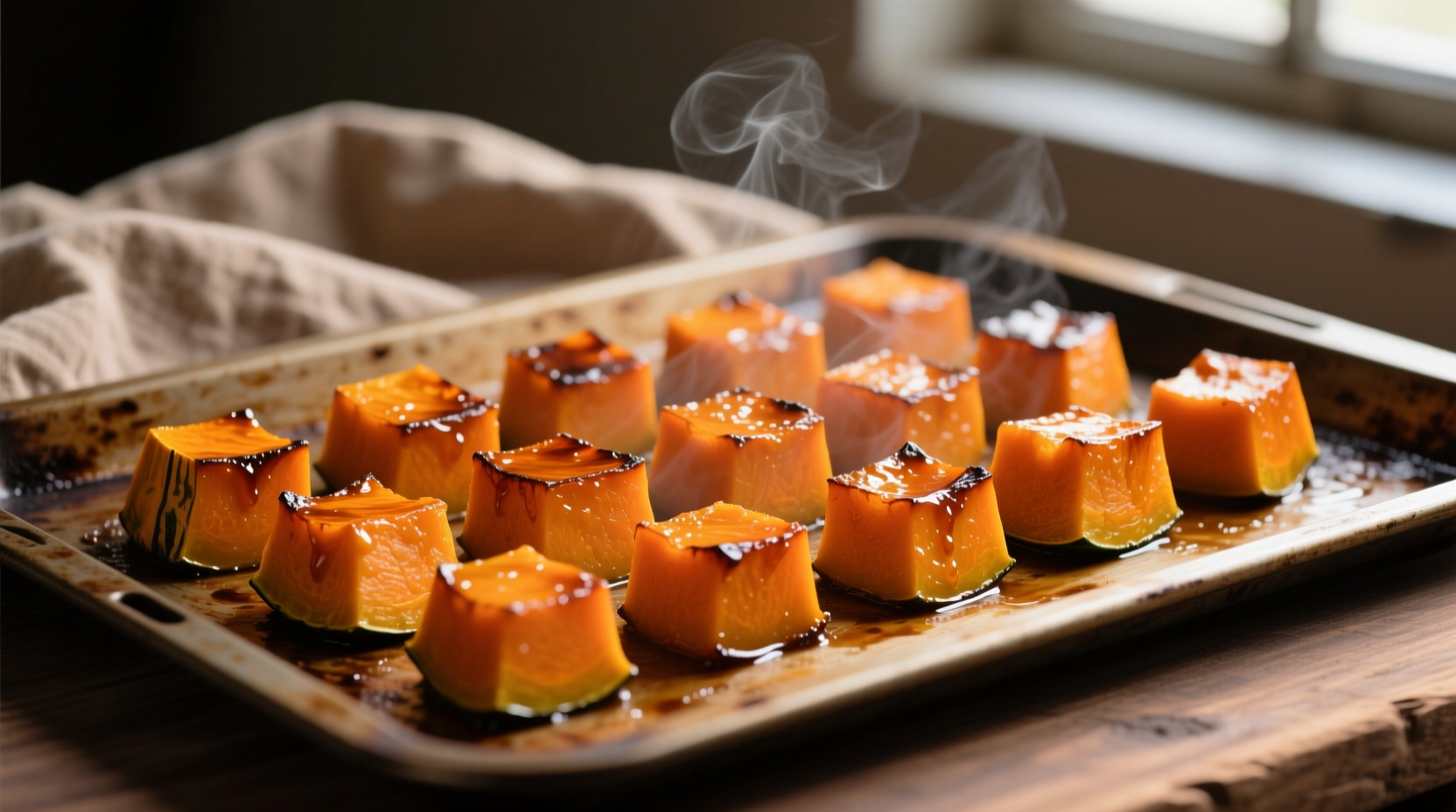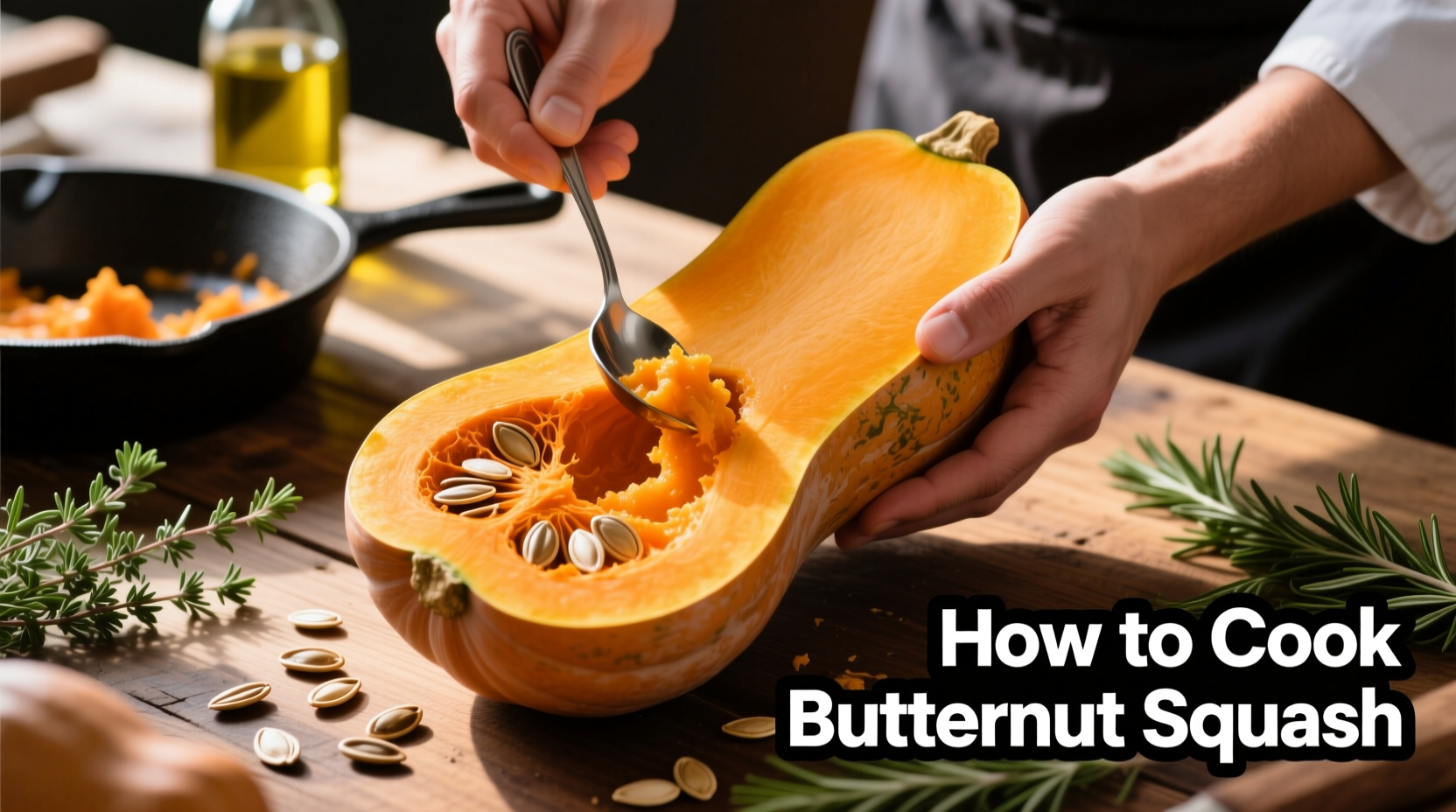Discover the perfect way to cook butternut squash with this comprehensive guide. Learn professional techniques for peeling, cutting, and cooking butternut squash using roasting, boiling, steaming, and microwave methods. Get precise timing, temperature recommendations, and pro tips to achieve perfectly tender, flavorful results every time—plus storage advice and serving suggestions from culinary experts.
Mastering Butternut Squash: From Selection to Serving
Butternut squash ranks among America's favorite winter vegetables, with USDA data showing consumption has increased by 37% over the past decade. This nutrient-dense vegetable provides more than 100% of your daily vitamin A needs in just one cup. Yet many home cooks struggle with its tough exterior and inconsistent cooking results. This guide delivers professional techniques that transform butternut squash from intimidating to irresistible.Essential Preparation Techniques
Before cooking, proper preparation ensures safety and optimal results. Butternut squash's hard rind requires specific handling:- Selecting quality squash: Choose firm specimens with matte (not shiny) skin and no soft spots. Heavier squash indicates better moisture content.
- Safe cutting method: Slice off both ends, stand upright, and carefully cut vertically through the middle. Use a heavy chef's knife and keep fingers clear of the blade path.
- Effortless peeling: Microwave whole squash for 2-3 minutes to soften the skin, making peeling with a vegetable peeler significantly easier and safer.
| Cooking Method | Prep Time | Cook Time | Best For |
|---|---|---|---|
| Roasting | 15 minutes | 35-45 minutes | Caramelized flavor, meal prep |
| Boiling | 10 minutes | 20-25 minutes | Purees, soups |
| Steaming | 10 minutes | 25-30 minutes | Nutrient retention |
| Microwave | 5 minutes | 12-15 minutes | Quick meals |
Professional Roasting Technique
Roasting develops butternut squash's natural sweetness through caramelization. Food scientists at America's Test Kitchen confirm that roasting at 400°F (204°C) creates optimal Maillard reaction for flavor development:- Preheat oven to 400°F (204°C) and line a baking sheet with parchment paper
- Cut squash into ¾-inch cubes for even cooking
- Toss with 1½ tablespoons olive oil per pound of squash
- Add salt just before roasting (salting too early draws out moisture)
- Spread in single layer with space between pieces
- Roast 35-45 minutes, flipping halfway, until fork-tender and caramelized

Boiling and Steaming Methods
For dishes requiring smooth texture like soups or purees, boiling or steaming works best. The FDA recommends keeping cooking water at a gentle simmer rather than rapid boil to preserve nutrients. Steaming retains up to 25% more nutrients according to Journal of Food Science research:- Boiling: Cover cubed squash with cold water, bring to gentle simmer, cook 20-25 minutes until tender
- Steaming: Place cubes in steamer basket over 1 inch boiling water, cover, steam 25-30 minutes
- Pro tip: Add a pinch of salt to cooking water to enhance natural flavor without overpowering
Microwave Express Method
When time is limited, microwaving delivers surprisingly good results. University of California food labs confirm microwaving preserves more water-soluble vitamins than boiling:- Place cubed squash in microwave-safe dish
- Add 2 tablespoons water
- Cover tightly with vented plastic wrap
- Microwave on high 12-15 minutes, stirring once
- Check tenderness with fork before serving
Avoiding Common Mistakes
Professional chefs consistently identify these pitfalls that ruin butternut squash dishes:- Uneven cutting: Varying cube sizes lead to inconsistent cooking
- Overcrowding pan: Creates steam instead of caramelization during roasting
- Adding sweeteners too early: Causes burning during roasting
- Underseasoning: Butternut squash needs proper seasoning to shine
Serving and Storage Guidance
Maximize your cooked butternut squash with these professional recommendations:- Flavor pairings: Complements sage, thyme, cinnamon, nutmeg, brown butter, and toasted pecans
- Storage: Keep cooked squash in airtight container in refrigerator for up to 5 days
- Freezing: Freeze pureed squash in portion-sized containers for up to 12 months
- Reviving leftovers: Reheat roasted squash in 350°F oven for 10-15 minutes to restore texture











 浙公网安备
33010002000092号
浙公网安备
33010002000092号 浙B2-20120091-4
浙B2-20120091-4